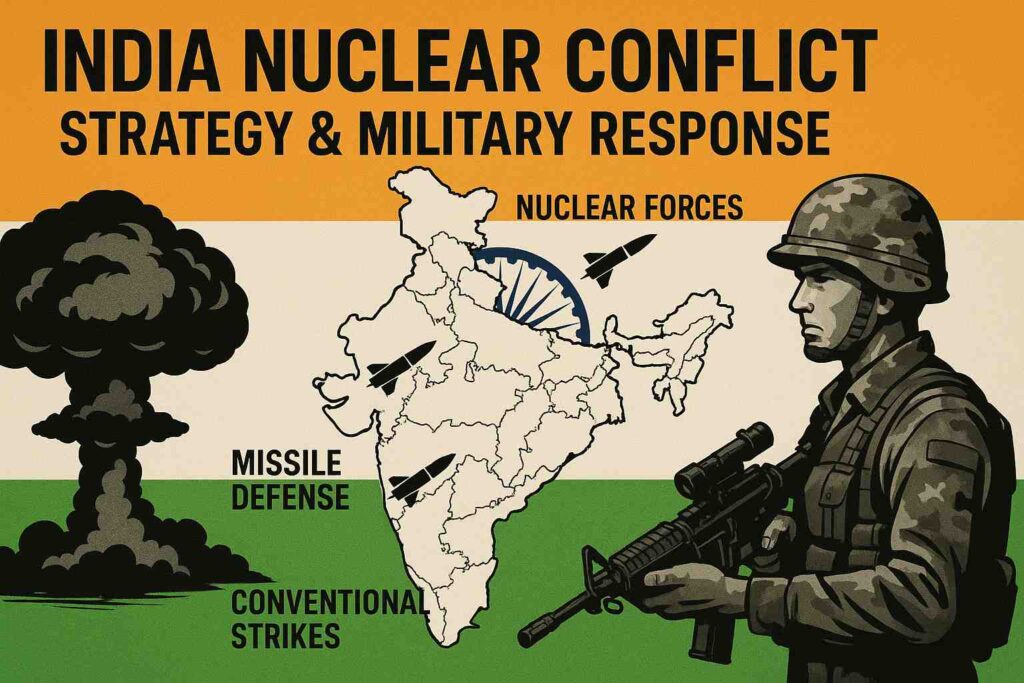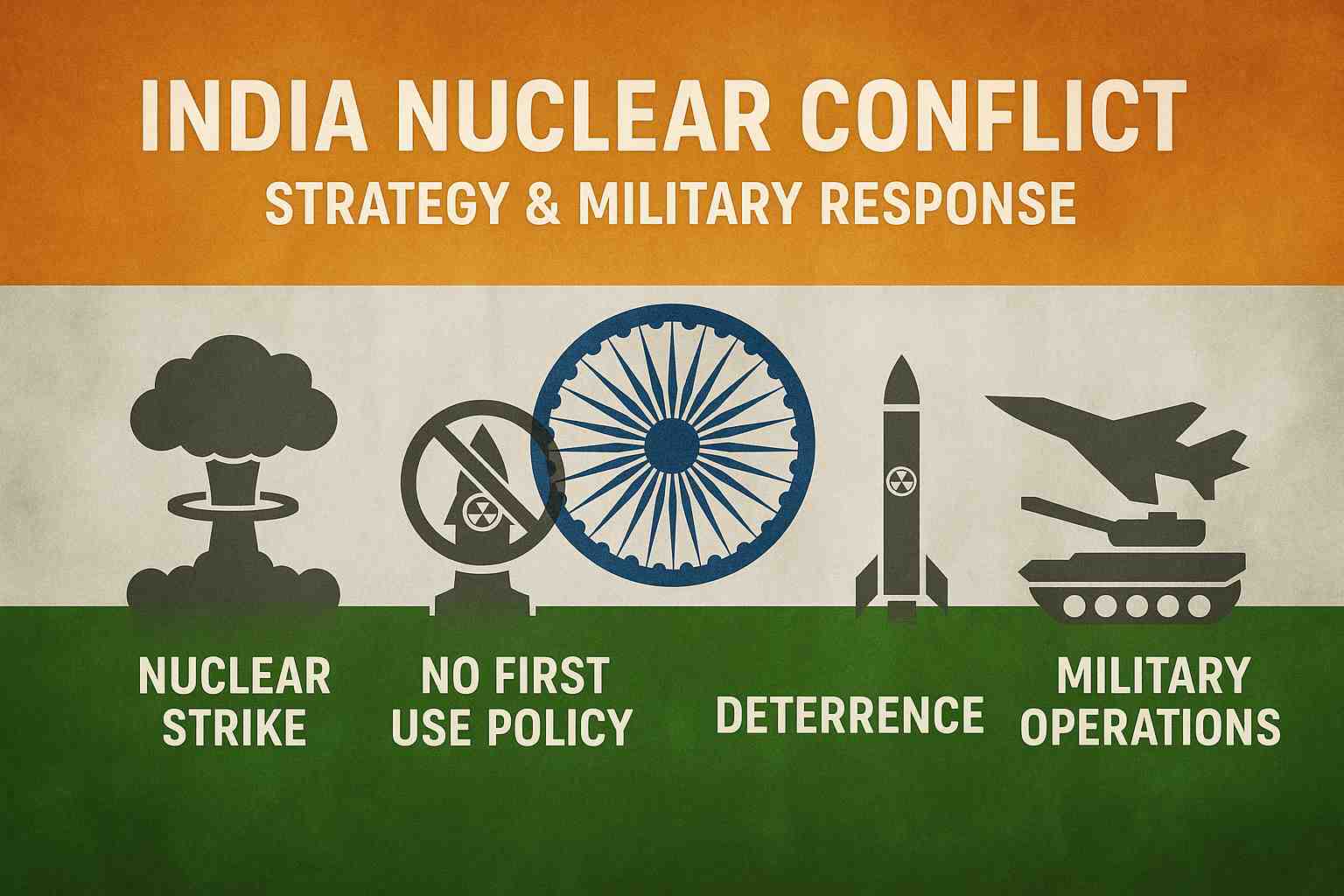In May 2025, the world once again turned its attention to the volatile India-Pakistan frontier following a devastating terror attack in Indian-held Kashmir. The tragedy reignited long-standing hostilities between the two nuclear-armed neighbors, sparking global fears of an impending India nuclear conflict. Amid the escalating tension, U.S. President Donald Trump made a controversial claim that his diplomatic intervention had prevented a potential nuclear war. However, India swiftly rejected the statement, reaffirming its steadfast commitment to conventional warfare.
The Trigger: Attack in Kashmir
On 22 April, 2025, a Kashmir-based terrorist attack killed 26 civilians and injured scores of others. The Indian government quickly pinned the blame on Pakistan-based terrorist outfit Jaish-e-Mohammed for plotting the attack. The incident followed similar tragedies in the past, such as the Pulwama attack of 2019, which had also risen to cross-border military strikes. India nuclear conflict has remained a persistent concern in the backdrop of such incidents.
India’s response was quick. On May 7, Indian Air Force fighter aircraft conducted precision strikes on terrorist camps along the Line of Control (LoC), a mission internally codenamed “Operation Sindoor.” The strikes were intended to disable terror infrastructure without targeting Pakistani military facilities, demonstrating India’s policy of calibrated and conventional response. These actions were also viewed through the lens of the India nuclear conflict, reflecting India’s careful approach to avoid escalation.
Trump’s Statement: A Nuclear Crisis Averted?
When global panic reached its high point, President Donald Trump during a press briefing said that the backdoor diplomacy of his government had prevented “a bad nuclear war” between India and Pakistan. He went on to imply that the neighborhood was on the verge of some disastrous exchange and that the U.S. effectively defused this. The India nuclear conflict scenario, according to Trump, was narrowly avoided.
This observation, though dramatic, was not part of India’s internal narrative. For India, the conflict stayed within traditional bounds, and its military doctrine never altered towards nuclear readiness at any stage in the face-off, reinforcing its stance on avoiding an India nuclear conflict.
India’s Firm Rebuttal
India’s Ministry of External Affairs (MEA) responded quickly to Trump’s statement. Spokesman Randhir Jaiswal said, “Our military actions have been completely in the conventional sphere. India is a responsible nuclear state with an abiding commitment to its No First Use policy.”
India’s “No First Use” (NFU) policy, introduced since the implementation of its nuclear doctrine in 2003, binds the nation to employ nuclear weapons only as a response to a nuclear strike. This doctrine has been a cornerstone of India’s strategic stability and international reputation as a responsible power for many years.

Understanding India’s Nuclear Doctrine
India’s nuclear policy is founded upon deterrence rather than aggression. India has asserted repeatedly restraint, transparency, and minimum credible deterrence. Even at times of crises such as the Kargil War (1999) and the Balakot strikes of 2019, India has adhered to its policy of non-first-use.
Analysts are of the opinion that India’s conventional dominance over Pakistan enables it to operate limited warfare without resorting to the nuclear threshold, so to speak, instantly. More specifically, India’s doctrine encourages the employment of proportionate and precise force to nullify threats, while reserving the nuclear option as a last resort deterrent—keeping the India nuclear conflict within rational bounds. In the global discourse, the India nuclear conflict is often cited as a model of calculated deterrence over brinkmanship.
Diplomacy Behind the Scenes
While India played down the nuclear aspect, diplomatic initiatives were certainly in motion. U.S. Vice President J.D. Vance and Secretary of State Marco Rubio approached both countries with a series of emergency calls and briefings. They reportedly assisted in establishing a communication channel between Indian and Pakistani military commanders, ultimately resulting in a ceasefire deal.
But Indian officials insisted that de-escalation was attained autonomously through direct action and calculated restraint. “We talk to our neighbors and international partners on every security issue, but Indian leadership takes the decisions and control of escalation,” a top defense official stated.
The Role of International Media and Perception Management
Rump’s remarks evoked not only diplomatic deliberations but also public discourse on both news channels and social media. Some global analysts challenged the veracity of his statements, citing that there were no discernible indicators of nuclear preparedness from India, including missile deployments or public alerts.
Conversely, Pakistan seemed more open to Trump’s remark, perhaps to blow up the story of U.S. facilitation and globalizing the issue of Kashmir—something India has long pushed back against.

India’s Conventional Dominance
India’s conventional military superiority is well known. With one of the largest standing armies, sophisticated air power, and indigenous missile technology, India has the capability to counter asymmetric threats such as terrorism without going over the nuclear threshold—an important stance in the context of an India nuclear conflict.
India has spent the last few years heavily investing in precision-strike technologies, surveillance, and border infrastructure. These developments allow for rapid and controlled reactions to provocations without escalating to full-scale war, helping to prevent any situation from turning into an India nuclear conflict.
Conclusion: A Call for Responsible Dialogue
India’s response to Trump’s claims of nuclear war with India strengthens its reputation as a mature and responsible international power. By making clear what its position is and affirming its commitment to traditional approaches and NFU policy, India issued a clear message to the world.
As South Asia continues to be a nuclear hot spot, it becomes increasingly vital to need calm, level-headed leadership and straight-up diplomacy. Sensationalism, however kindly meant, has the power to shatter thin balances. Going forward, what’s necessary is for global leaders to talk in specifics and regional players to seek out dialogue before melodrama.
In an age where there is an eagerness to exaggerate concerns about India nuclear conflict, India’s steadfast commitment to conventional war represents a cornerstone of regional stability.
Sources:
- Economic Times
- Financial Times
- The Guardian
- Ministry of External Affairs (India)
- Strategic Affairs Journal



